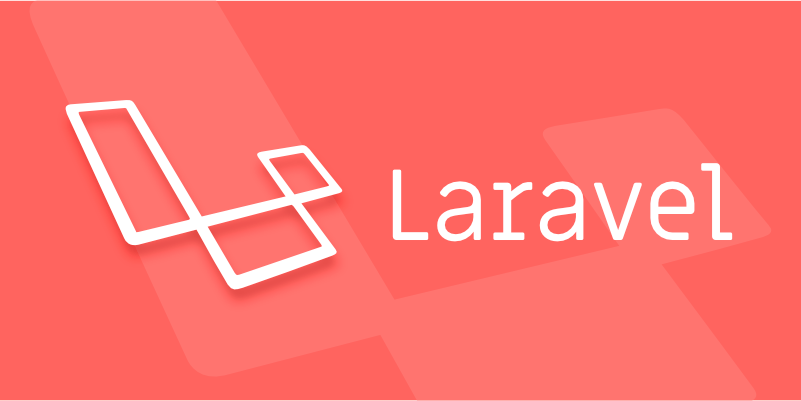Laravel packages are created by setting up a proper structure, writing service providers, distributing via Composer, and avoiding common pitfalls. First, create a directory with a composer.json for autoloading and Laravel integration. Second, build the core logic in src/ and register it via a Service Provider using register() and boot() methods. Third, distribute via Packagist by tagging releases and submitting to GitHub. Lastly, test installation steps, use PSR-4 correctly, avoid hardcoded paths, and always run composer dump-autoload after changes.

Laravel is a powerful PHP framework, and one of its strengths lies in how easily you can extend it using custom packages. If you’ve built something reusable — like a service integration, a set of helpers, or a specific functionality you want to reuse across projects — packaging it up makes sense. Here’s how to do that effectively.

Setting Up Your Package Structure
Before jumping into code, you need a proper structure for your package. Laravel uses Composer to manage dependencies, so your package should follow Composer standards.

You’ll typically start by creating a new directory outside your Laravel project (or inside packages if you're keeping everything together). Inside this folder, create the basic files:
-
composer.json– This defines your package metadata. -
src/– Where your actual code lives. - Optional: tests, config, migrations, etc.
A minimal composer.json might look like this:

{
"name": "yourname/laravel-package",
"autoload": {
"psr-4": {
"YourName\\YourPackage\\": "src/"
}
},
"extra": {
"laravel": {
"providers": [
"YourName\\YourPackage\\YourPackageServiceProvider"
]
}
}
}This sets up autoloading and tells Laravel which service provider to use when the package is installed.
Writing the Core Logic and Service Provider
The heart of any Laravel package is usually a Service Provider. This is where you register bindings, publish configuration files, and integrate with Laravel’s core.
Let’s say you’re building a logging utility. You’d have a class like Logger.php in your src/ folder, and then in your service provider’s register() method, you might bind it:
use YourName\YourPackage\Logger;
public function register()
{
$this->app->singleton(Logger::class, function ($app) {
return new Logger(config('yourpackage.log_level'));
});
}Also, if you need configuration, publish it from the service provider:
public function boot()
{
$this->publishes([
__DIR__.'/../config/yourpackage.php' => config_path('yourpackage.php'),
], 'config');
}This allows users to run php artisan vendor:publish and customize settings.
Distributing Your Package via Composer
Once your package works locally, you’ll probably want to share it. The easiest way is through Packagist, which integrates directly with Composer.
Here’s what to do:
- Make sure your
composer.jsonhas correct versioning ("version": "1.0.0"or use tags). - Push your package to GitHub (or another Git repo).
- Submit your repo to Packagist, or use automatic hooks.
- Tag releases using Git tags (
git tag 1.0.0 -m "Initial release").
After that, anyone can install your package with:
composer require yourname/laravel-package
If you don’t want to publish publicly yet, you can still test it locally by pointing Composer to a path:
In your Laravel app’s composer.json:
{
"repositories": [
{
"type": "path",
"url": "../path-to-your-package"
}
]
}Then run composer require yourname/laravel-package --prefer-source.
Common Gotchas and Tips
There are a few things people often miss when developing Laravel packages:
- ? Always test installation steps fresh — delete
vendor/and reinstall to simulate a real user experience. - ? Use PSR-4 correctly — mismatched namespaces and paths cause most autoload issues.
- ? Don’t hardcode paths — use
__DIR__ordirname(__FILE__)instead. - ? Consider adding Laravel Octane compatibility if you expect high performance usage.
- ? Be careful with facades — they work but can make testing harder.
- ? Include a README with clear instructions on installation and usage.
One thing that trips people up is forgetting to run composer dump-autoload after changes — especially when working locally. It’s easy to think your changes aren’t working when really, Composer just hasn’t reloaded the class map.
Basically, developing and distributing Laravel packages boils down to following standard Composer practices and leveraging Laravel’s service provider system. Once you get the structure right, the rest flows pretty naturally.
No magic involved — just good organization and attention to detail.
The above is the detailed content of Developing and Distributing Custom Packages for Laravel. For more information, please follow other related articles on the PHP Chinese website!

Hot AI Tools

Undress AI Tool
Undress images for free

Undresser.AI Undress
AI-powered app for creating realistic nude photos

AI Clothes Remover
Online AI tool for removing clothes from photos.

Clothoff.io
AI clothes remover

Video Face Swap
Swap faces in any video effortlessly with our completely free AI face swap tool!

Hot Article

Hot Tools

Notepad++7.3.1
Easy-to-use and free code editor

SublimeText3 Chinese version
Chinese version, very easy to use

Zend Studio 13.0.1
Powerful PHP integrated development environment

Dreamweaver CS6
Visual web development tools

SublimeText3 Mac version
God-level code editing software (SublimeText3)
 Working with pivot tables in Laravel Many-to-Many relationships
Jul 07, 2025 am 01:06 AM
Working with pivot tables in Laravel Many-to-Many relationships
Jul 07, 2025 am 01:06 AM
ToworkeffectivelywithpivottablesinLaravel,firstaccesspivotdatausingwithPivot()orwithTimestamps(),thenupdateentrieswithupdateExistingPivot(),managerelationshipsviadetach()andsync(),andusecustompivotmodelswhenneeded.1.UsewithPivot()toincludespecificcol
 Sending different types of notifications with Laravel
Jul 06, 2025 am 12:52 AM
Sending different types of notifications with Laravel
Jul 06, 2025 am 12:52 AM
Laravelprovidesacleanandflexiblewaytosendnotificationsviamultiplechannelslikeemail,SMS,in-appalerts,andpushnotifications.Youdefinenotificationchannelsinthevia()methodofanotificationclass,andimplementspecificmethodsliketoMail(),toDatabase(),ortoVonage
 Understanding Dependency Injection in Laravel?
Jul 05, 2025 am 02:01 AM
Understanding Dependency Injection in Laravel?
Jul 05, 2025 am 02:01 AM
Dependency injection automatically handles class dependencies through service containers in Laravel without manual new objects. Its core is constructor injection and method injection, such as automatically passing in the Request instance in the controller. Laravel parses dependencies through type prompts and recursively creates the required objects. The binding interface and implementation can be used by the service provider to use the bind method, or singleton to bind a singleton. When using it, you need to ensure type prompts, avoid constructor complications, use context bindings with caution, and understand automatic parsing rules. Mastering these can improve code flexibility and maintenance.
 Strategies for optimizing Laravel application performance
Jul 09, 2025 am 03:00 AM
Strategies for optimizing Laravel application performance
Jul 09, 2025 am 03:00 AM
Laravel performance optimization can improve application efficiency through four core directions. 1. Use the cache mechanism to reduce duplicate queries, store infrequently changing data through Cache::remember() and other methods to reduce database access frequency; 2. Optimize database from the model to query statements, avoid N 1 queries, specifying field queries, adding indexes, paging processing and reading and writing separation, and reduce bottlenecks; 3. Use time-consuming operations such as email sending and file exporting to queue asynchronous processing, use Supervisor to manage workers and set up retry mechanisms; 4. Use middleware and service providers reasonably to avoid complex logic and unnecessary initialization code, and delay loading of services to improve startup efficiency.
 Managing database state for testing in Laravel
Jul 13, 2025 am 03:08 AM
Managing database state for testing in Laravel
Jul 13, 2025 am 03:08 AM
Methods to manage database state in Laravel tests include using RefreshDatabase, selective seeding of data, careful use of transactions, and manual cleaning if necessary. 1. Use RefreshDatabasetrait to automatically migrate the database structure to ensure that each test is based on a clean database; 2. Use specific seeds to fill the necessary data and generate dynamic data in combination with the model factory; 3. Use DatabaseTransactionstrait to roll back the test changes, but pay attention to its limitations; 4. Manually truncate the table or reseed the database when it cannot be automatically cleaned. These methods are flexibly selected according to the type of test and environment to ensure the reliability and efficiency of the test.
 Choosing between Laravel Sanctum and Passport for API authentication
Jul 14, 2025 am 02:35 AM
Choosing between Laravel Sanctum and Passport for API authentication
Jul 14, 2025 am 02:35 AM
LaravelSanctum is suitable for simple, lightweight API certifications such as SPA or mobile applications, while Passport is suitable for scenarios where full OAuth2 functionality is required. 1. Sanctum provides token-based authentication, suitable for first-party clients; 2. Passport supports complex processes such as authorization codes and client credentials, suitable for third-party developers to access; 3. Sanctum installation and configuration are simpler and maintenance costs are low; 4. Passport functions are comprehensive but configuration is complex, suitable for platforms that require fine permission control. When selecting, you should determine whether the OAuth2 feature is required based on the project requirements.
 Implementing Database Transactions in Laravel?
Jul 08, 2025 am 01:02 AM
Implementing Database Transactions in Laravel?
Jul 08, 2025 am 01:02 AM
Laravel simplifies database transaction processing with built-in support. 1. Use the DB::transaction() method to automatically commit or rollback operations to ensure data integrity; 2. Support nested transactions and implement them through savepoints, but it is usually recommended to use a single transaction wrapper to avoid complexity; 3. Provide manual control methods such as beginTransaction(), commit() and rollBack(), suitable for scenarios that require more flexible processing; 4. Best practices include keeping transactions short, only using them when necessary, testing failures, and recording rollback information. Rationally choosing transaction management methods can help improve application reliability and performance.
 Handling HTTP Requests and Responses in Laravel.
Jul 16, 2025 am 03:21 AM
Handling HTTP Requests and Responses in Laravel.
Jul 16, 2025 am 03:21 AM
The core of handling HTTP requests and responses in Laravel is to master the acquisition of request data, response return and file upload. 1. When receiving request data, you can inject the Request instance through type prompts and use input() or magic methods to obtain fields, and combine validate() or form request classes for verification; 2. Return response supports strings, views, JSON, responses with status codes and headers and redirect operations; 3. When processing file uploads, you need to use the file() method and store() to store files. Before uploading, you should verify the file type and size, and the storage path can be saved to the database.






